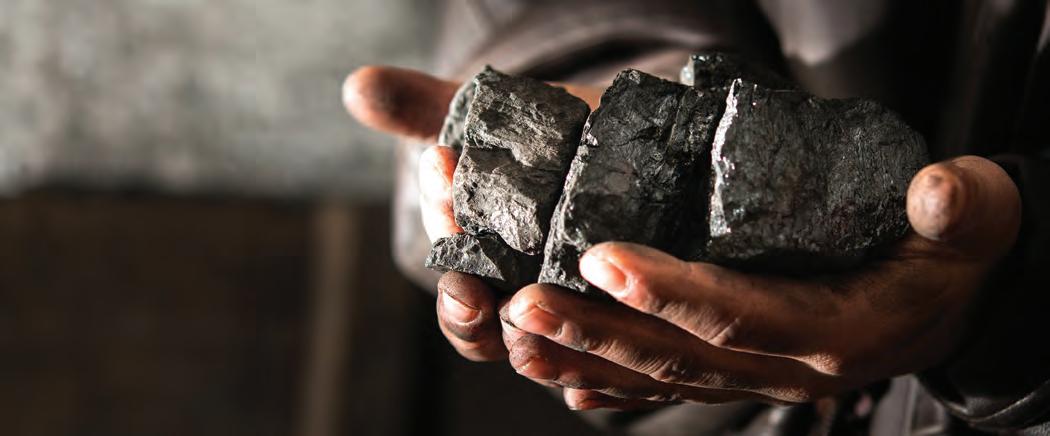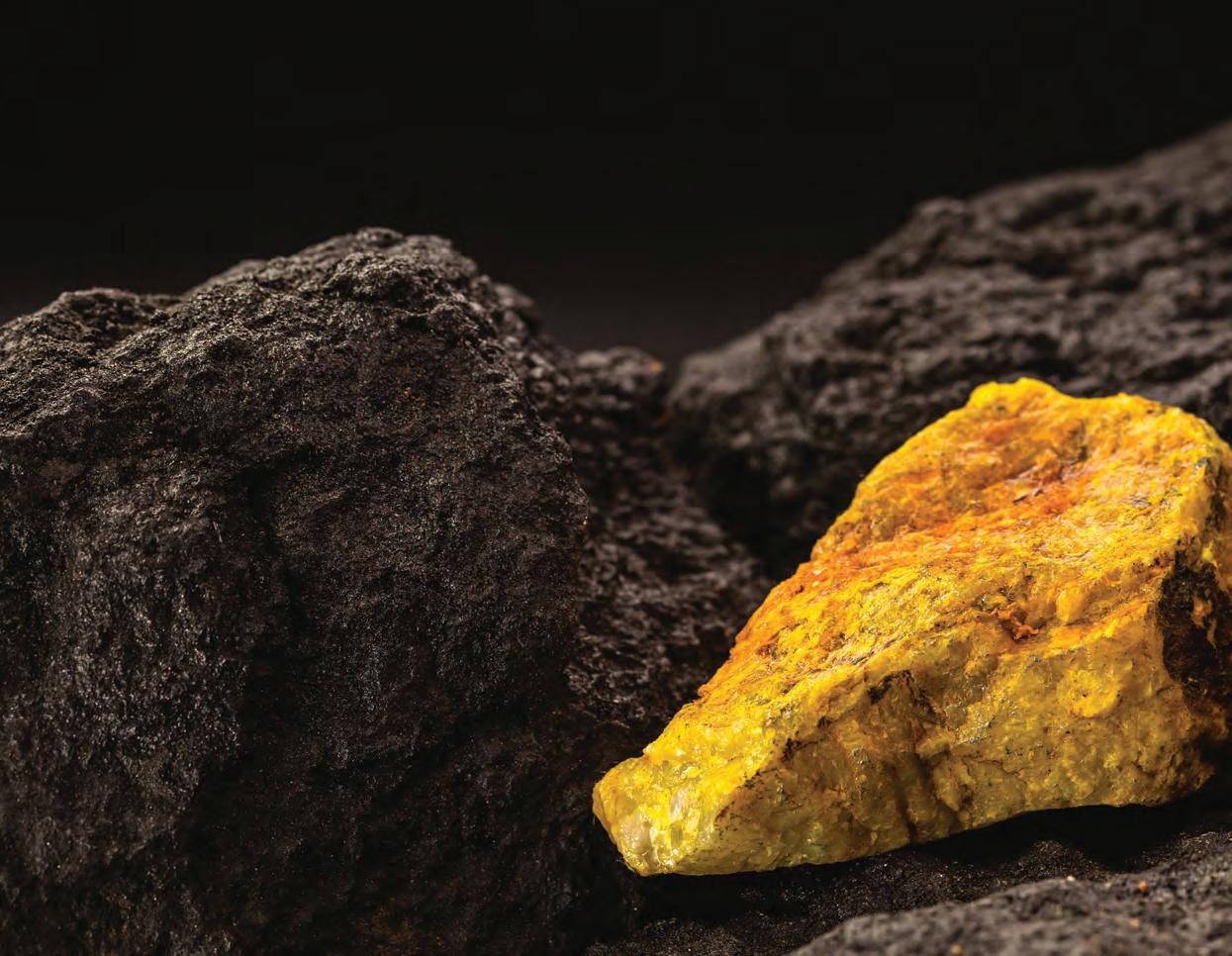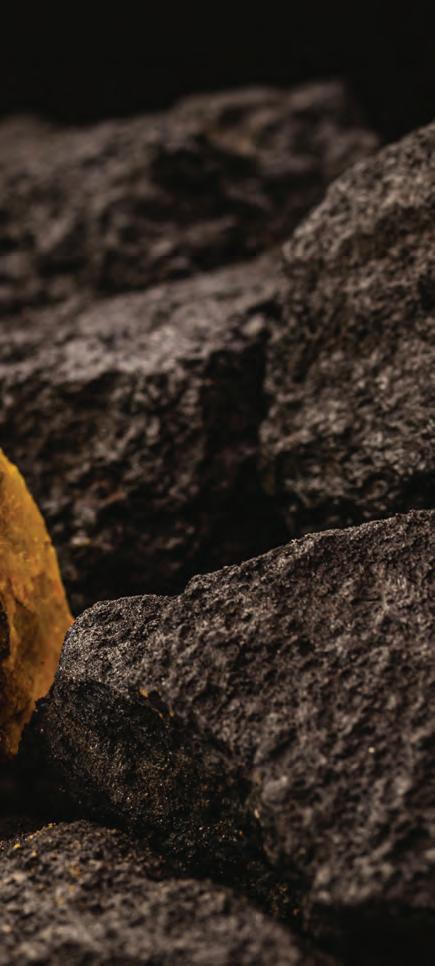
10 minute read
Commodities in 2022 Exploring six key themes
Despite an early-year push, iron ore’s future remains uncertain.
While 2021 was a year of surprises in the commodities world, with crushing lows offset by unprecedented highs, what can we expect in 2022? We take a deep dive.
There’s been a few notable trends to emerge in the commodities world to commence 2022.
Nickel prices rose to 10-year highs in January, while lithium jumped amid a supply squeeze.
We’ve also seen iron ore make a recovery from the lows of November 2021, a slump which forced several Australian iron ore mines to halt operations.
Copper has also started strongly in 2022, trading above $US9500 ($13,218) per tonne in January and the market is expected to remain competitive as the path to electrification continues.
But what are the experts’ predictions for 2022? We chatted to PricewaterhouseCoopers (PwC) and Fitch Solutions to get their commodity forecasts for the year ahead.
WHAT TO MAKE OF IRON ORE?
Seaborne iron ore prices reached three-month highs in January, as 62 per cent Australian iron ore fines rose to $US131.5 per dry metric tonne (dmt) at the port of Qingdao.
This had dipped to $US123.9 per dmt at the time of writing, encapsulating the iron ore market’s current tumultuousness.
Fitch Solutions senior commodities analyst Sabrin Chowdhury says given the many considerations at play, it’s difficult to put a finger on iron ore.
“Iron ore is indeed quite uncertain. Last year, prices rallied beyond $US200 per tonne. If you went back a few years when prices were below $US80 per tonne, thinking that iron ore would go above $US200 was really unthinkable at that point,” Chowdhury says.
“This year and also going forward, we do not see a return of the mismatch between supply and demand which would lead to prices rallying beyond $US200 a tonne – definitely not this year or the coming years, ceteris paribus.”
The rise of iron ore could be put down to China announcing or beginning 3 trillion yuan’s ($654.85 billion) worth of infrastructure projects to start 2022,
The demand for critical minerals is definitely going to be very strong in the coming years. The electric vehicle sector is one of the strongest growth sectors going forward and the batteries in the EVs require a lot of metals.
according to government data. Needless to say, Chowdhury does not anticipate such a sudden recovery.
“Previously we thought, ‘OK, prices have totally collapsed; the iron ore prices would not go higher anymore’, but in January they have and … it’s totally a surprise because China was supposed to experience a slowdown,” she says.
It is understood China has hastened the rollout of major infrastructure projects as the country experiences growing downward economic pressure amid supply chain disruptions and weakening demand.
Ongoing property woes and the enduring COVID-19 pandemic haven’t helped China’s cause, either, and analysts suggest expediting infrastructure development could accelerate fixed-asset investment, a major driver of economic growth.
Given the low-cost nature of their operations, Australia’s major iron ore miners should enjoy decent profit margins throughout 2022.
“Iron ore prices are probably going to average more than $US100 per tonne this year. In that case, it’s still very good for Australia because Australia’s major producers produce at $US20 or less per tonne – their cost of production is so low,” Chowdhury says.
“So at $US100 or above a tonne, Australian producers would still be very, very profitable, but it’s still a little bit of a dent from last year.”
WILL THE APPETITE FOR CRITICAL MINERALS REMAIN?
There’s no denying the world’s appetite for critical minerals, a reality being steered by the decarbonisation pursuit and the necessity to replace fossil fuels with batteries.
Battery metals such as lithium and nickel are experiencing high demands to begin 2022, which is pushing prices to record highs and highlighting the importance of Australia’s critical minerals capability.
With electric vehicle (EV) manufacturers on the ask more than ever before, Fitch Solutions believes Australia is well positioned to benefit.
“The demand for critical minerals is definitely going to be very strong in the coming years. The electric vehicle sector is one of the strongest growth sectors going forward and the batteries in the EVs require a lot of metals,” Chowdhury says.
“So these are battery-grade nickel, batterygrade cobalt and lithium. These three metals are going to be very widely in demand and the good thing is that Australia is a major producer of these.
“If you look at the global dynamics of supply and demand then I would say that Australia does produce most of those critical minerals at this point. It has the most advanced infrastructure, it has the most advanced facilities and projects.”
There are a number of established Australian producers across nickel, lithium and cobalt, while the country is also replete with many emerging projects.
BHP’s Nickel West operation in Western Australia produced approximately 89,000 tonnes of nickel in the 2021 financial year.
IGO’s Nova operation, Glencore’s Murrin Murrin mine and First Quantum’s Ravensthorpe project in WA are also leading nickel producers.
The Greenbushes lithium mine in WA, owned by a three-way joint venture of IGO and Tianqi Lithium Corporation (51 per cent) and Albemarle Corporation (49 per cent), has an annual production capacity of 1.2 million tonnes per annum of spodumene concentrate.
Other current Australian lithium operations include Pilbara Minerals’ Pilgangoora project, Allkem’s Mt Cattlin project and the Mt Marion project, owned by a 50:50 joint venture of Mineral Resources and Jiangxi Ganfeng Lithium Co.
Cobalt has less representation in Australia, with Glencore’s Murrin Murrin operation the country’s principal producer of the resource.
According to government data, Australia has 19 per cent of global cobalt reserves but only amounts to 4 per cent of the world’s cobalt production.
Looking to make the most of Australia’s

Uranium prices reached a nine-year high in September 2021.

cobalt potential, Cobalt Blue is looking to elevate its Broken Hill project in New South Wales into production.
Broken Hill’s pilot plant successfully produced cobalt sulphate samples in October 2021, and with a host of parties eager to receive samples, Cobalt Blue will transition the pilot plant to a demonstration plant in 2022.
At the time of writing, the offer price for cobalt on the London Metal Exchange was $US70,150 per tonne.
THE FUTURE OF COAL
From the lowest lows to the highest highs, coal has bounced back significantly across the last 12 months.
Newcastle coal futures traded as low as $US46.18 per tonne in September 2020 before making a resurgence and reaching an unprecedented high of $US269 per tonne inOctober 2021.
This came as a cold winter in the Northern Hemisphere drove a demand for power generation, while China’s rising thirst for the resource appears to be having a material impact on the global seaborne trade market even if the country’s Australia ban continues.
According to data accessed via leading Chinese financial firm Wind Information, China’s coal imports reached 26.9 million tonnes in October, up 96.2 per cent from a year before.
In January, Newcastle coal futures were trading above $US200 per tonne as Indonesia, the world’s largest exporter of thermal coal, brought exports to a halt as supplies at domestic power plants fell to critically low levels.
PwC Australia partner Marc Upcroft says undulating coal prices have had an impact on Australia coal producers, while the most established coal mines seem to be benefiting from the current surge. Despite this, Upcroft suggests the price may cool as the seasons change.
“If you look at the last two years, coal prices have been fairly low, and that’s impacted profitability of Australian coal producers,” he says.
“We do see a situation right now where there’s some good results coming in. I think it would be really interesting to see what happens throughout 2ß022.
“Most analysts expect that coal prices will come down when the overall energy demand from a cold winter starts to dissipate, but we’ll continue to see what happens in relation to coal in 2022 and beyond.”
AWAITING THE NEXT GOLD RUSH
According to the Perth Mint, in 2021 gold experienced its first calendar year decline since 2018, falling 4 per cent to end the year at $US1820 per ounce.
Gold’s price decline could be attributed to various factors such as a rising US dollar, which finished 2021 up 6 per cent, improving economic growth forecasts, the global vaccine rollout reducing investor fears, or the continued rise of digital markets such as cryptocurrencies, which experienced a 205 per cent overall market value increase in 2021.
Despite this, it must be noted that gold’s difficulties largely occurred in the first quarter of 2021. Gold ended March 2021 at below $US1700 per ounce but trended north from then onwards.
The final two months of 2021 were especially positive, as gold prices rose from about $US1750 to begin November, up to $US1850, before settling at $US1820 to close the year.
In January, gold was trading above $US1800 per ounce, as investors continued

to show faith in the commodity as an inflation hedge amid volatility in the equities market and uncertainty over Omicron’s economic impact.
Upcroft says that while there has been a somewhat bearish undertone to the gold market in recent times, all is certainly not lost.
“I guess to be clear on this one, gold hasn’t fallen away at all really … in terms of its price impact, it had a big push in 2020,” Upcroft says.
“They’ve since come down so if you just look at a discreet, shorter period it looks like gold is off, but I think the key thing for gold is there’s still lots of growth going on in relation to gold. There are still investments in mines, there’s still quite a lot of deal activity in relation to the gold sector.”
Upcroft is optimistic about gold’s outlook for the year ahead, which comes back to the commodity’s reliability as a safe haven.
“The gold price itself might get a bit of a kicker in 2022 or beyond and that will all depend on how the global economy is tracking, what is the inflation outcome and expectation going forward because there’s a direct correlation between the two,” he says.
“Analysts really see the gold price trending downwards in real terms and that’s just the safety point they’ve anchored to for some time now because that’s been a bit of a trend.
“It will be interesting to see if the gold bugs are right and there will be a significant uptick in gold price.”
WILL URANIUM MAKE ITS RUN?
The uranium market has mimicked the escalations seen in nickel and lithium in the past few months, with prices reaching a nine-year high of $US50.08 per pound in September 2021.
The price has undulated since then but was trading high at $US46.45 per pound at the time of writing, which can be put down to deadly protests halting operations in Kazakhstan, the world’s largest producer of the commodity.
Australia exported 6166 tonnes of uranium in the 2021 financial year from two active operations – BHP’s Olympic Dam mine and Heathgate Resources’ Beverly-Four Mile mine, both in South Australia.
With other minerals being called upon in the energy transition, Upcroft is less optimistic about Australia’s uranium outlook going forward.
“Uranium’s outlook does depend on Australian and global appetite to seeing uranium as part of the carbon solution. Intuitively it can, but when you look at it on balance, there’s other solutions that are seen as ahead,” he says.
“It is quite fascinating for the likes of Paladin Energy and Energy Resources of Australia (ERA), just how big the share prices and market capitalisations of those companies are when you take into account their current production.
“Therefore, it is all about, ‘maybe something will be different in the future’. So there’s plenty of people out there that are supporting uranium as part of the energy transformation that’s to come, but it really needs to transpire to a reality rather than just a maybe at this point.”
ASX-listed companies Paladin Energy and ERA both featured in PwC’s 2021 Aussie Mine report, which takes a closer look at the MT50 – the top 50 ASX-listed mining companies positioned outside the ASX 50.
Paladin Energy is represented by its Langer Heinrich uranium mine in Namibia, which the company is moving towards restarting, and was trading at $0.87 with a market cap of $2.34 billion at the time of writing.
ERA halted processing activities at its Ranger mine in the Northern Territory in January 2021 after decades of operation at the site. ERA was trading at $0.36 with a market cap of $1.33 billion at the time of writing.











